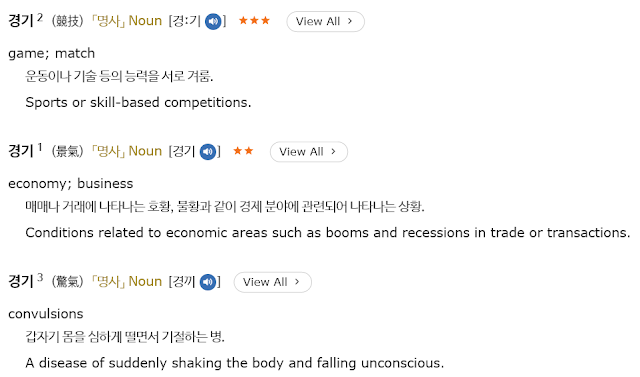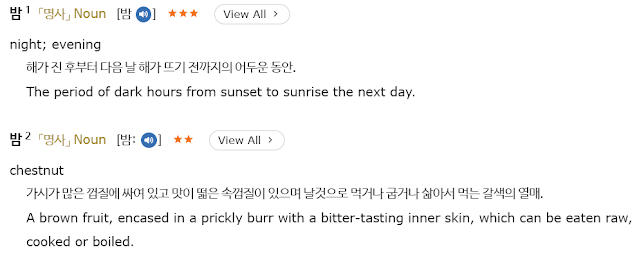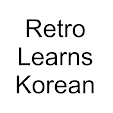First look at the dictionary may be confusing. In this article I want to clear up some of the more confusing or overlooked parts that are super useful for learners. I think its very easy to overlook helpful information because it seems overwhelming.
Like all knowledge it becomes much easier to digest when we know about it before hand. So I just want to point out a few things that you can take into the future with you.
Personally there are only 2 dictionaries I use. Krdict and Naver dictionary. The first is my preference because it shows the description of the word and has some examples very clearly laid out. I tend to use Naver as a last resort for words that are not on Krdict.
The origin of the word
To the right of the word you may have come across some strange symbols. These are likely Chinese characters or Hanja, which are the most common loan words into the Korean language. The reason they are displayed next to the word is to show that it is the original written form of the word.
When there is nothing to the right of the word it generally means that it is a pure Korean word. We can see other examples of loan words from different languages. Which is great for pinpointing the origin of a word. Many are English, French, Dutch, Portuguese or Japanese due to historical reasons.
It is also possible that the origin of the word is uncertain to the scholars who create the entries. A symbol that may be present next to the Hanja of a word is ▽, this escaped me for a while because I had no idea how to search for the meaning. However eventually a friend explained to me that it means the standard pronunciation has changed.
This can be handy to know because sometimes you will find a link between words you did not know existed as the pronunciation is wildly different. Although with some Hanja you will find there are alternate pronunciations that are standard, hopefully this knowledge will save you some time searching.
Pronunciation
Within the square brackets we can find the pronunciation of a word in Hangeul. This can be useful if you are unsure on some sound change rules. There are 2 things to note here. The first is that some words will tense the first consonant of the second syllable. As seen with [한ː짜] below.
Although this is part of sound change rules its not always apparent as shown in the picture. This is something to listen out for when people are speaking. As we can see here all 3 경기 have a different pronunciation.
The second while likely related to tensing the second syllables consonant is ː, which comes after a syllable to indicate a long vowel. If you play the audio you will be able to hear the difference between a regular vowel and a long vowel. Some claim that long vowels in Korean are disappearing however its still worth noting their existence. Some say that they are a remnant of the once common tonal system.
Usages
So we have our examples like every great dictionary should.
However there is one useful piece of information that is slightly hidden away and maybe a bit more confusing to decipher. Underneath the examples we can find a quite detailed showcase of how the word is grammatically used with the subjects and the objects within a sentence.
This can range from 이/가, 에/에서, 의 to 을/를, 까지. You can often see the usage within the example sentences too. This can be helpful for identifying some usages you may come across that are not reflected in the examples.
For related posts please check out these pages:
- TTMIK Grammar points list
- Hanja(word builder) lessons list
- Is Learning Hanja(한자)[漢字] as Korean Learners important?
- Anki Decks for Korean Learners
- Talk To Me In Korean Book Review and Thoughts on the Curriculum
- The Monolingual Transition and How to Approach it
- Lingo Mastery's 2000 Most Common Korean Words in Context Review
- Billy Go's Korean Made Simple 1 Grammar Book Review
- Talk to Me in Korean Advanced Idiomatic Expressions Reference List
- How to Master the Korean Number Systems
- Korean Grammar in Use Advanced - Grammar Points Ranked
- The Best Vocabulary Books for Korean










No comments:
Post a Comment
Share your thoughts on this topic